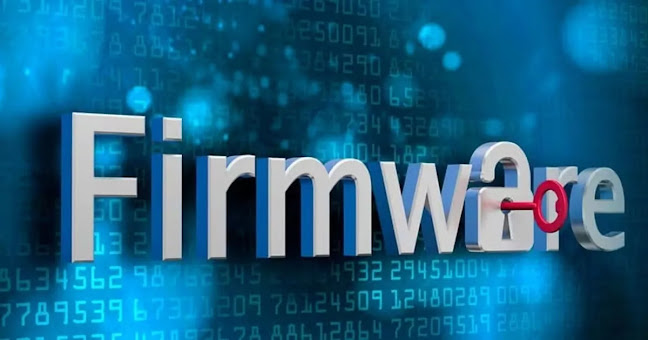Understanding Computer Firmware: Your Guide to the Unsung Hero of Computing
Unlock the mysteries of computer firmware! Explore the role and evolution of firmware in computing with our comprehensive guide.
Introduction
When we think about the components that make our computers run smoothly, we often focus on hardware and software. However, there's a critical element that quietly operates in the background, ensuring our computers function correctly – firmware. In this comprehensive guide, we'll delve into the world of computer firmware, demystifying its role, types, and importance in the realm of computing.
Table of Contents
1. What is Firmware?
1.1. The Bridge Between Hardware and Software
1.2. Firmware vs. Software
2. Types of Computer Firmware
2.1. BIOS (Basic Input/Output System)
2.2. UEFI (Unified Extensible Firmware Interface)
2.3. Firmware in Peripherals
3. Understanding BIOS
3.1. The Legacy of BIOS
3.2. How BIOS Works
3.3. Limitations of BIOS
4. Introducing UEFI
4.1. The Evolution to UEFI
4.2. Features of UEFI
4.3. Benefits of UEFI
5. The Transition: BIOS to UEFI
5.1. Why Transition to UEFI?
5.2. The Challenges of Migration
6. The Firmware Update Process
6.1. Why Update Firmware?
6.2. Risks and Best Practices
1. What is Firmware?
1.1. The Bridge Between Hardware and Software
Firmware serves as the vital link between a computer's hardware components and its operating system. It's a type of software that is permanently or semi-permanently stored in hardware devices. Unlike traditional software, which can be easily modified or updated, firmware remains more static. It acts as an intermediary, allowing hardware and software to communicate effectively.
1.2. Firmware vs. Software
To understand firmware better, it's essential to distinguish it from regular software. While both are sets of instructions, firmware is closely tied to specific hardware components. Software, on the other hand, is versatile and can run on various systems. Firmware resides in devices like your computer's motherboard, hard drive, and graphics card, ensuring these components work correctly.
2. Types of Computer Firmware
2.1. BIOS (Basic Input/Output System)
The BIOS is one of the most well-known forms of firmware. It's typically found in computers and contains instructions for the computer's startup process. BIOS firmware initializes hardware components during the boot-up sequence, making it a crucial part of your computer's functionality.
2.2. UEFI (Unified Extensible Firmware Interface)
UEFI is a modern replacement for traditional BIOS firmware. It offers advanced features, including faster boot times, support for larger storage devices, and improved security. UEFI has become the standard in many modern computers and is more versatile than its BIOS predecessor.
2.3. Firmware in Peripherals
Firmware isn't limited to just your computer's core components. It's also present in various peripherals such as printers, keyboards, and mice. These devices often receive firmware updates to enhance performance, fix bugs, or add new features.
3. Understanding BIOS
3.1. The Legacy of BIOS
BIOS has been the standard firmware interface for decades. It's responsible for initializing and managing essential hardware components during a computer's boot-up process. While BIOS served as a reliable foundation for computing, it has its limitations, especially in the modern era of computing.
3.2. How BIOS Works
BIOS typically resides on a flash memory chip on the computer's motherboard. It contains the instructions needed to start the hardware components and load the operating system from the boot drive. However, BIOS has a limited user interface and lacks some advanced features found in UEFI.
3.3. Limitations of BIOS
BIOS limitations include slower boot times, limited support for large hard drives, and difficulties in managing security features. These shortcomings led to the development of UEFI as a successor.
4. Introducing UEFI
4.1. The Evolution to UEFI
UEFI represents the next generation of firmware technology. It was developed to address the shortcomings of BIOS and provide a more versatile and feature-rich firmware interface. UEFI firmware is stored in a flash memory chip and offers significant improvements over its predecessor.
4.2. Features of UEFI
UEFI brings several advancements, including faster boot times, support for larger hard drives (over 2.2 terabytes), a graphical user interface (GUI), and robust security features. UEFI firmware also supports secure boot, which helps protect against boot-level malware.
4.3. Benefits of UEFI
The benefits of UEFI include improved hardware initialization, better support for modern hardware, enhanced user interfaces, and improved security. UEFI's versatility makes it suitable for various computing environments.
5. The Transition: BIOS to UEFI
5.1. Why Transition to UEFI?
Many computer manufacturers have transitioned from BIOS to UEFI due to UEFI's advantages. UEFI offers improved boot performance, compatibility with larger drives, and enhanced security features that are essential in today's computing landscape.
5.2. The Challenges of Migration
Transitioning from BIOS to UEFI can be challenging, as it often involves firmware updates and changes to the boot process. While some modern computers come with UEFI by default, older systems may require a manual update, which can be complex and risky.
6. The Firmware Update Process
6.1. Why Update Firmware?
Firmware updates are essential for several reasons. They can improve hardware compatibility, enhance system stability, and address security vulnerabilities. Manufacturers release firmware updates regularly to ensure their products remain functional and secure.
6.2. Risks and Best Practices
While firmware updates are beneficial, they come with some risks. An improper update can potentially render a device non-functional. To minimize these risks, follow best practices such as ensuring the update is from a reputable source and carefully following instructions provided by the manufacturer.
Conclusion
Computer firmware is a critical but often overlooked component of modern computing. It plays a crucial role in ensuring hardware components function correctly and communicate with software seamlessly. Understanding firmware's significance and knowing how to manage firmware updates can help you maintain the performance and security of your computer and its peripherals.
In this guide, we've explored the fundamentals of firmware, its types, and the importance of keeping it up to date. Armed with this knowledge, you're better equipped to appreciate the unsung hero of computing – firmware.






No comments